- Why Grow Celery?
- Nutritional Benefits
- Flavor and Versatility
- Easy to Grow
- Cost Savings
- A Fun and Rewarding Experience
- Choosing the Right Variety
- Growing Conditions
- Appearance and Taste
- Days to Maturity
- Preparing Your Vegetable Garden
- 1. Choose the Right Location
- 2. Clear the Area
- 3. Improve Soil Quality
- 4. Test Soil pH
- 5. Plan Your Garden Layout
- 6. Prepare the Planting Bed
- 7. Add Organic Fertilizer
- 8. Water the Bed
- Planting and Caring for Celery
- 1. Choosing the Right Variety
- 2. Starting Celery Seeds
- 3. Transplanting Celery
- 4. Growing Conditions
- 5. Fertilizing and Watering
- 6. Harvesting Celery
- Harvesting and Storing Celery
- Harvesting Celery
- Storing Celery
- Freezing Celery
- Growing Celery Indoors
- Choosing the Right Variety
- Starting Seeds
- Caring for Celery Plants
- Harvesting Celery
- Troubleshooting
- Conclusion
- Tips and Troubleshooting
- Tips for Growing Celery
- Troubleshooting Common Celery Problems
- Harvesting and Storing Celery
- “Question-Answer”
- What is celery?
- Can celery be grown in a windowsill?
- What type of soil is best for growing celery?
- What is the best time to plant celery?
- How often should celery be watered?
- How long does it take for celery to grow?
- “Video” 8 Vegetables You Can Grow In Your Tiny Apartment All Year Round
If you are a fan of fresh vegetables and love to grow your own, then celery should definitely be on your list. Not only is celery a versatile and healthy vegetable, but it is also perfect for growing in both the vegetable garden and on your windowsill. In this article, we will explore the different aspects of growing celery, from choosing the right variety to planting and caring for it.
When it comes to choosing the right variety of celery for your garden or windowsill, there are a few factors to consider. First and foremost, you will need to decide whether you want to grow self-blanching or green celery. Self-blanching varieties are easier to grow and require less maintenance, making them ideal for beginners. Green celery, on the other hand, offers a stronger flavor and can be stored for longer periods. Whichever variety you choose, make sure to select disease-resistant seeds or seedlings for a successful harvest.
Once you have chosen your celery variety, it’s time to start planting. Celery can be started from seed indoors or directly planted in the garden. If you decide to start from seed, it is recommended to start them indoors about 10-12 weeks before the last frost date. Fill a seed tray or small pots with a good quality potting mix and sow the seeds on the surface. Keep the soil consistently moist and provide a warm environment for the seeds to germinate.
If you prefer to directly plant celery in the garden, make sure to choose a location that receives full sun or partial shade. Celery requires well-draining soil with plenty of organic matter. Before planting, amend the soil with compost or well-rotted manure to improve fertility. Transplant the seedlings when they are about 8-10 weeks old, spacing them about 6-8 inches apart. Water the plants regularly and mulch around them to conserve moisture and suppress weeds.
Caring for celery plants is relatively easy but requires attention to detail. Keep the soil consistently moist but not waterlogged. Avoid overhead watering, as it can lead to fungal diseases. Fertilize the plants every few weeks with a balanced organic fertilizer to promote healthy growth. In terms of pest control, celery can attract aphids, slugs, and snails. Monitor your plants regularly and use organic methods, such as spraying with neem oil or introducing beneficial insects, to keep pests under control.
Why Grow Celery?

Celery is not only a versatile and nutritious vegetable, but it is also a relatively easy plant to grow in your vegetable garden or even on your windowsill. There are several reasons why you should consider growing celery:
Nutritional Benefits
- Celery is low in calories and fat, making it an excellent choice for those looking to maintain or lose weight.
- It is a good source of dietary fiber, which aids in digestion and helps keep you feeling full.
- Celery is rich in antioxidants, vitamins, and minerals, including vitamin K, vitamin C, and potassium.
Flavor and Versatility
The crisp and crunchy texture of celery, coupled with its mild and slightly sweet flavor, makes it a versatile ingredient in a variety of dishes.
You can use celery in salads, soups, stir-fries, juices, smoothies, and even as a snack with your favorite dip.
It also adds depth and flavor to stocks, stews, and sauces, making it an essential ingredient in many culinary traditions around the world.
Easy to Grow

Celery can be grown both outdoors in a vegetable garden or indoors in a container on your windowsill.
It is a cool-weather crop that thrives in temperatures between 60-70°F (15-21°C). This makes it a great choice for spring and fall gardening.
Celery plants require moderate sun exposure and regular watering to keep the soil consistently moist.
With a little care and attention, you can enjoy a bountiful harvest of fresh, homegrown celery.
Cost Savings
By growing celery yourself, you can save money on groceries and have a steady supply of this nutritious vegetable right at your fingertips.
A bunch of celery from the grocery store can be relatively expensive, especially if you prefer organic or specialty varieties.
With just a few celery plants, you can have an ongoing supply of fresh stalks throughout the growing season.
A Fun and Rewarding Experience
Growing your own celery can be a rewarding and enjoyable experience. From sowing the seeds to watching the plants grow and harvesting the crispy stalks, you get to be part of the entire process.
It’s a great way to connect with nature, learn about plant lifecycles, and experience the satisfaction of growing your own food.
Apart from its nutritional benefits, flavor, versatility, and cost savings, growing celery allows you to enjoy a sense of accomplishment and a deeper appreciation for the fruits of your labor.
Choosing the Right Variety
When it comes to choosing the right variety of celery to grow in your vegetable garden or windowsill, there are a few factors to consider. Different varieties have different characteristics, and choosing the right one can greatly affect the success of your celery growing venture.
Growing Conditions
One of the first things to consider is the growing conditions you have available. Celery requires a lot of moisture and prefers cool temperatures. If you live in a hot and dry climate, it may be best to choose a variety that is more tolerant to heat and drought.
On the other hand, if you have a cool and damp growing area, you can choose a variety that is less resistant to disease and pests. It is important to research the specific growing conditions recommended for each variety and choose one that matches your environment.
Appearance and Taste
Another factor to consider is the appearance and taste of the celery. Some varieties have a more intense flavor, while others are milder. Some have thick stalks, while others have thinner stalks. Consider what you plan to use the celery for – if you want to use it for soups or stews, a more intense flavor may be desirable. If you plan to eat it raw or use it in salads, a milder flavor may be better.
The appearance of the celery also varies among different varieties. Some have green stalks, while others have red or yellow stalks. Consider what aesthetic you prefer in your garden and choose a variety that matches your preferences.
Days to Maturity
One more consideration is the days to maturity for each variety. Different varieties have different maturation times, and this can be important if you have a specific timeline for your celery harvest. If you want to harvest the celery as soon as possible, choose a variety with a shorter maturation time. If you are more patient and can wait longer for the harvest, choose a variety with a longer maturation time.
It is also a good idea to choose varieties that have a uniform maturation time, so you can harvest the celery all at once rather than having to pick it at different stages of maturity.
Overall, choosing the right variety of celery is an important decision when it comes to successful growing. Consider the growing conditions, appearance and taste preferences, and maturation time to make an informed choice for your garden or windowsill.
Preparing Your Vegetable Garden
Before you start growing celery in your vegetable garden, it’s important to properly prepare the area to ensure optimal growing conditions. Here are some steps to get your garden ready:
1. Choose the Right Location
Celery plants prefer full sun or partial shade, so select a spot in your garden that receives at least 6-8 hours of sunlight per day. It’s also important to choose an area with well-draining soil to prevent waterlogging, as celery plants need consistent moisture but can’t tolerate standing water.
2. Clear the Area
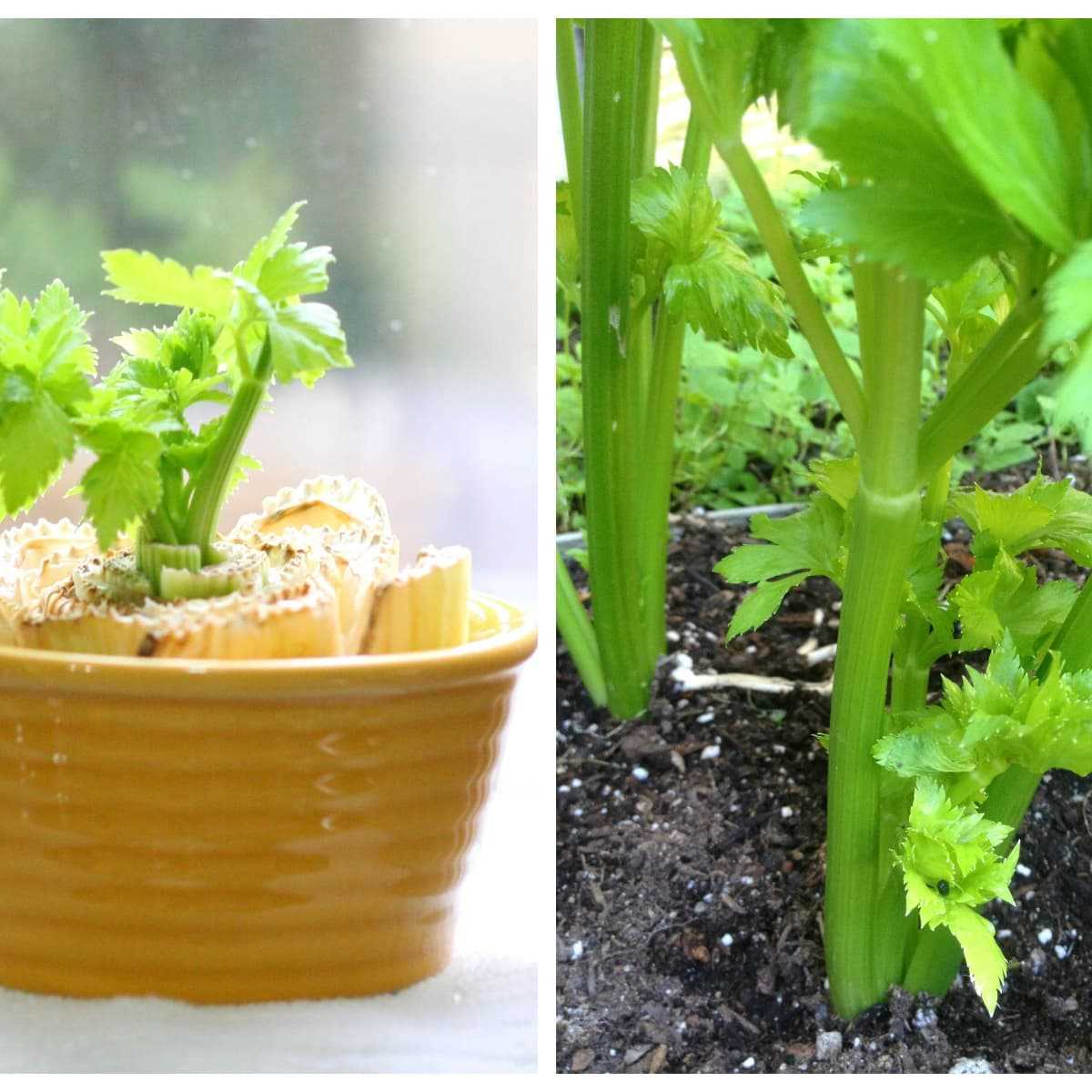
Remove any weeds, rocks, or debris from the garden bed. Celery needs space to grow, so it’s important to clear the area of any obstructions that may impede its growth.
3. Improve Soil Quality
Celery plants thrive in soil that is rich in organic matter and nutrients. Before planting, mix in compost or well-rotted manure to improve the soil’s fertility. Adding organic matter will also help retain moisture in the soil, which is beneficial for celery plants.
4. Test Soil pH
Celery plants prefer a slightly alkaline soil with a pH between 6.0 and 7.0. Use a soil pH testing kit to determine the pH level of your garden soil. If the pH is too acidic, add lime to raise the pH level. If the pH is too alkaline, add sulfur to lower the pH level.
5. Plan Your Garden Layout
Consider the space requirements of celery plants, which can grow up to 18-24 inches in height and spread out about 12-18 inches. Space your plants accordingly to allow for proper growth and airflow. You may also want to consider planting celery alongside companion plants such as onions, carrots, or tomatoes, which can help deter pests and improve overall garden health.
6. Prepare the Planting Bed
Use a garden fork or tiller to loosen the soil to a depth of 12-18 inches. Remove any large clumps, rocks, or weeds as you work the soil. Break up the soil until it has a fine texture, making it easier for young celery plants to establish their roots.
7. Add Organic Fertilizer
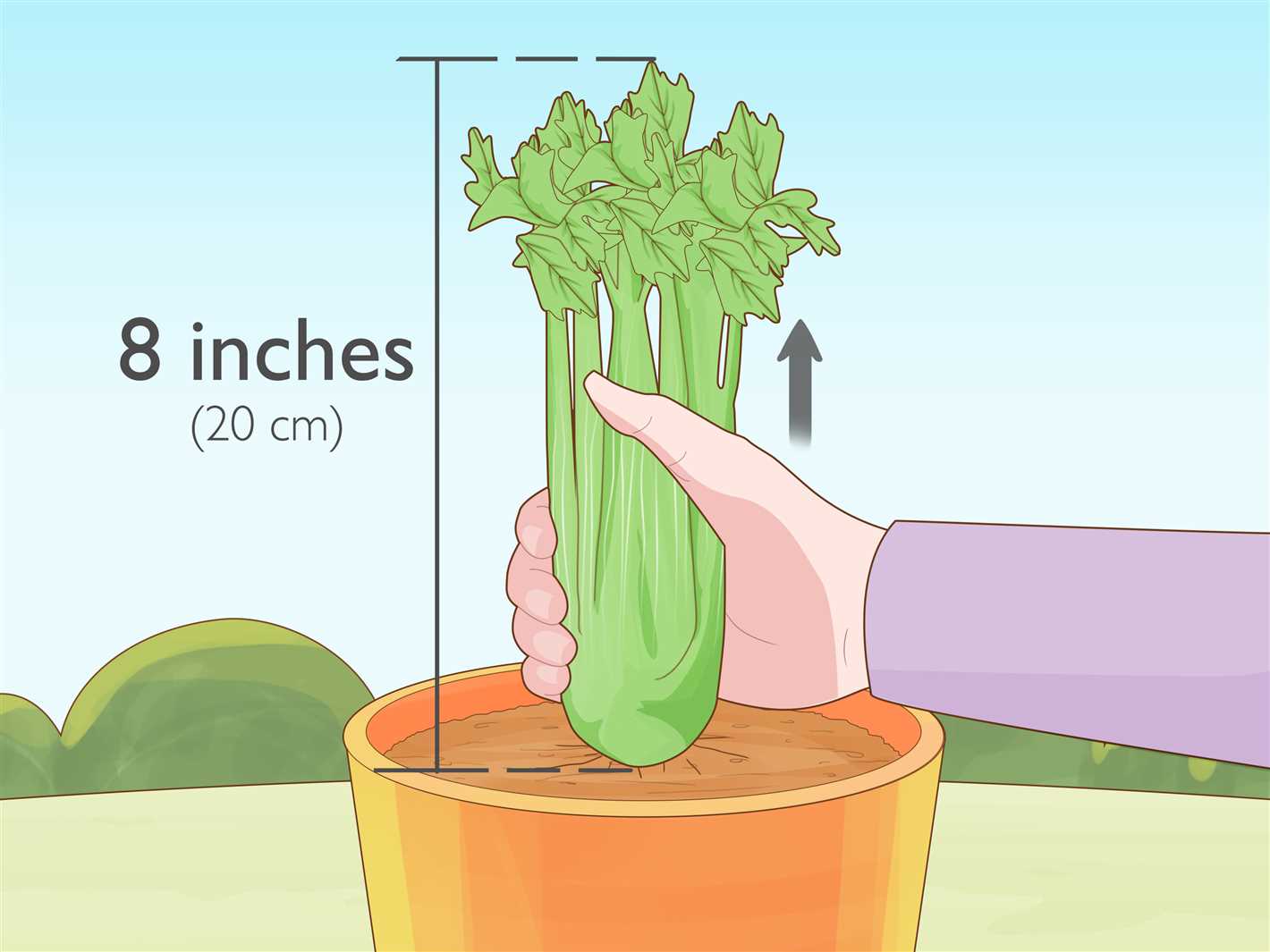
Celery plants are heavy feeders, so it’s beneficial to incorporate an organic fertilizer into the soil before planting. Choose a balanced fertilizer that is low in nitrogen but rich in phosphorus and potassium. Follow the package instructions for application rates.
8. Water the Bed
Before planting your celery, thoroughly water the garden bed to ensure that the soil is evenly moist. This will help the young plants establish their roots and reduce transplant shock.
Following these steps will help set the stage for a successful celery harvest. Once your garden is prepared, you can move on to planting and caring for your celery plants.
Planting and Caring for Celery
When it comes to growing celery, there are a few key steps to keep in mind. Whether you are planting it in your vegetable garden or on a windowsill, the following guidelines will help you have success with your celery plants.
1. Choosing the Right Variety

- There are several different varieties of celery to choose from, so consider your preferences and the growing conditions.
- Some popular varieties include green or yellow celery, as well as self-blanching types.
- Research the specific requirements for each variety to ensure a successful harvest.
2. Starting Celery Seeds
- Start celery seeds indoors about 8-10 weeks before the last frost date in your area.
- Plant the seeds in flats or containers with a well-draining potting mix.
- Maintain a temperature of about 70-75°F (21-24°C) to aid in germination.
- Keep the soil evenly moist but not saturated.
- Once the seedlings have 2-3 true leaves, they can be transplanted into larger pots or directly into the garden.
3. Transplanting Celery
- When transplanting celery seedlings, space them about 6-8 inches (15-20 cm) apart in rows that are 12-18 inches (30-46 cm) apart.
- Set the seedlings into the prepared holes, making sure to cover the root ball completely with soil.
- Water the seedlings immediately after transplanting to help settle the soil.
4. Growing Conditions
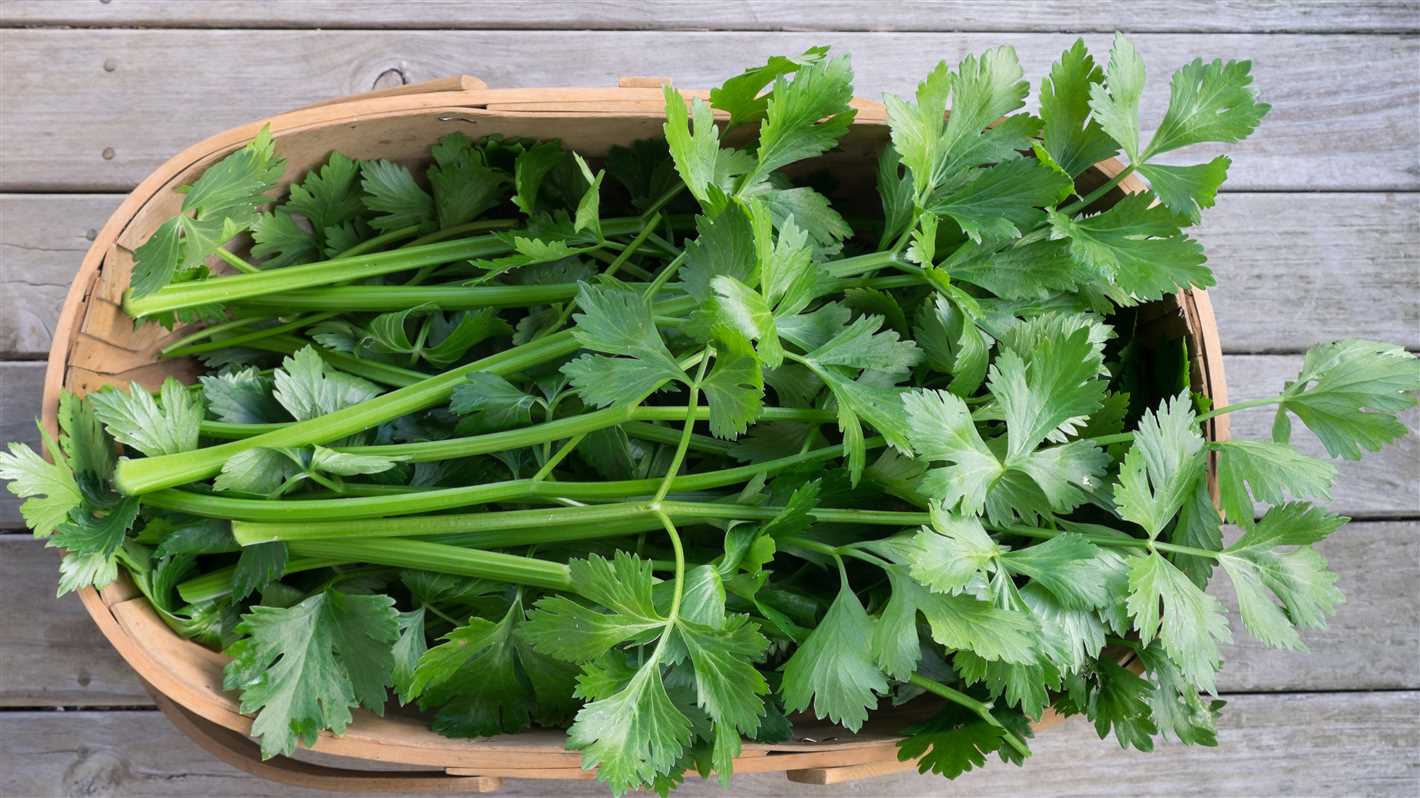
- Celery prefers cool weather and will grow best in temperatures around 60-70°F (15-21°C).
- Provide your celery plants with 6-8 hours of sunlight each day.
- Keep the soil consistently moist by watering regularly, especially during dry periods.
- Consider applying a layer of mulch around the plants to help retain moisture and suppress weeds.
5. Fertilizing and Watering
- Feed your celery plants with a balanced fertilizer every 4-6 weeks during the growing season.
- Water the plants deeply, ensuring that the soil is consistently moist but not waterlogged.
- Aim to keep the soil slightly damp, as celery plants dislike both drought and excessive moisture.
6. Harvesting Celery
- Celery typically takes about 110-140 days to reach maturity.
- Harvest the stalks when they are around 8-12 inches (20-30 cm) tall and have a strong aroma.
- Cut the stalks at the base, using a sharp knife or garden shears.
- Leave any remaining stalks in the ground to continue growing and producing.
By following these planting and caring tips, you’ll be on your way to growing your own delicious and nutritious celery. Whether you’re enjoying it fresh in salads or adding it to your favorite recipes, homegrown celery is sure to be a treat.
Harvesting and Storing Celery
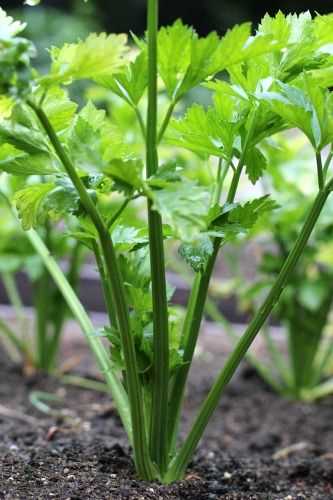
Once your celery plants have reached maturity, it’s time to harvest them. Here are a few tips to help you properly harvest and store your celery:
Harvesting Celery
- Harvest celery when the stalks are firm and about 8-10 inches long.
- Using a sharp knife or garden shears, cut the stalks at the base, near ground level.
- Be careful not to damage the neighboring stalks or the crown of the plant.
Storing Celery
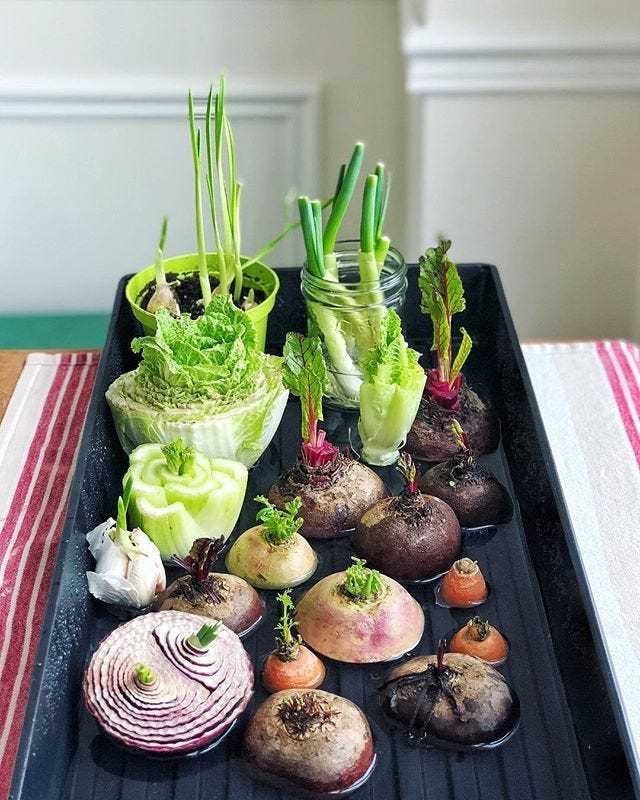
- After harvesting, remove any damaged or discolored leaves from the stalks.
- Trim the leafy tops, leaving about an inch of stalk attached.
- Rinse the celery under cool running water to remove any dirt or debris.
- Wrap the stalks tightly in damp paper towels or place them in a perforated plastic bag.
- Store celery in the refrigerator’s crisper drawer for up to 2 weeks.
Freezing Celery
- If you have an abundance of celery, you can freeze it for later use.
- Blanch the celery by boiling it in water for 3 minutes, then immediately submerge it in ice water to stop the cooking process.
- Drain the celery and pat it dry with paper towels.
- Place the blanched and dried celery in an airtight freezer bag or container.
- Label the container with the date and store it in the freezer for up to 6 months.
By following these harvesting and storage tips, you can enjoy fresh celery from your garden or windowsill for an extended period of time.
Growing Celery Indoors
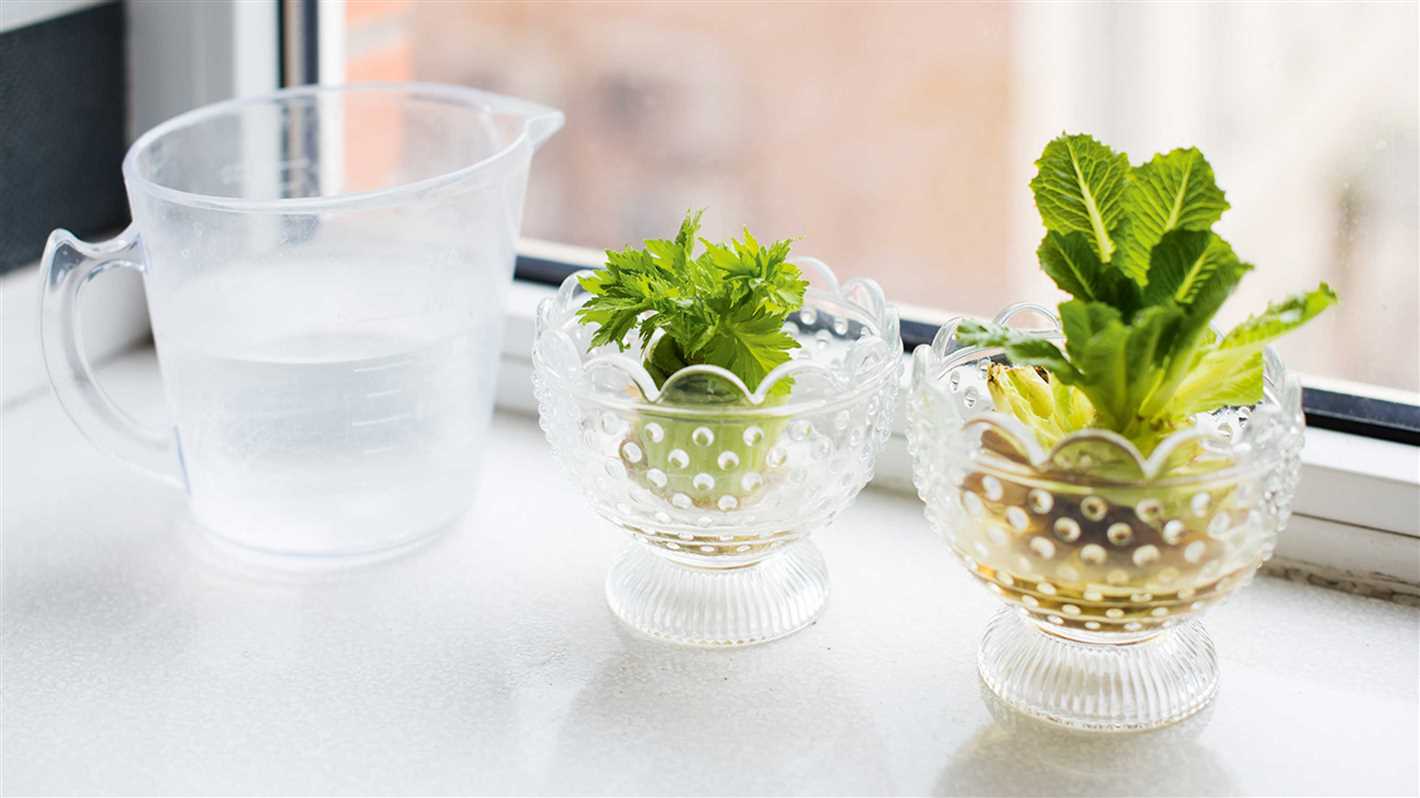
Growing celery indoors is a great way to enjoy fresh, crispy stalks year-round. Whether you have limited garden space or simply want to have an indoor vegetable garden, celery can be successfully grown indoors with a little bit of planning and care.
Choosing the Right Variety
When it comes to growing celery indoors, it’s important to choose the right variety. Look for compact, dwarf varieties that are suited for container gardening. Some popular options for growing celery indoors include ‘Tango’, ‘Golden Self-Blanching’, and ‘Dorato d’Asti’.
Starting Seeds
To start growing celery indoors, begin by sowing the seeds in a seed tray or small pots filled with a well-draining potting mix. Sow the seeds about ¼ inch deep and keep them moist. Celery seeds can be slow to germinate, so be patient and keep the soil consistently moist until the seeds sprout.
Caring for Celery Plants
Celery plants require a cool and moist environment to thrive, so it’s important to provide them with the right conditions. Place the seedlings in a bright, sunny location that receives at least 6 hours of sunlight per day. If natural light is limited, you can use fluorescent grow lights to supplement the light.
Keep the soil evenly moist by watering the plants regularly. Celery plants also benefit from high humidity, so placing a tray of water near the plants or using a humidifier can help create the right conditions.
Harvesting Celery
Celery is typically ready to harvest in about 85 to 120 days after sowing the seeds. You can harvest celery stalks individually as they mature or cut the entire plant at the base. Harvesting celery by cutting the entire plant will give you a bunch of stalks all at once.
If the celery stalks are not as crisp as you’d like, you can blanch them by wrapping the entire plant in newspaper or tying the stalks together using rubber bands a week or two before harvesting. This process helps to lighten the stalks and improve their texture.
Troubleshooting
When growing celery indoors, you may encounter some common problems. Here are a few troubleshooting tips:
- If your celery plants have yellowing leaves, it may be a sign of overwatering or nutrient deficiencies. Adjust your watering schedule and consider fertilizing the plants.
- If your celery plants are leggy and have thin stalks, they may not be receiving enough light. Move them to a brighter location or provide additional artificial lighting.
- If your celery plants are not growing well, it could be due to improper temperature or humidity. Make sure to provide the plants with the right conditions for optimal growth.
Conclusion
Growing celery indoors can be a rewarding and flavorful experience. By choosing the right variety, starting seeds properly, and providing the right care, you can enjoy fresh celery from your windowsill or indoor garden all year round.
Tips and Troubleshooting
Tips for Growing Celery
- Choose a sunny spot in your garden with well-draining soil for planting celery.
- Start celery seeds indoors about 10 to 12 weeks before the last frost date in your area. Transplant the seedlings outside when they are about 6 to 8 weeks old.
- Celery requires consistent moisture, so make sure to water it regularly. However, avoid overwatering to prevent root rot.
- Apply a layer of mulch around the celery plants to help retain soil moisture and suppress weed growth.
- Fertilize celery plants with a balanced organic fertilizer every 3 to 4 weeks during the growing season.
- Harvest celery stalks when they reach the desired size. Cut them at the base of the plant, near the soil level.
Troubleshooting Common Celery Problems
Problem: Celery plants have small, spindly stalks.
Possible Cause: Insufficient sunlight.
Solution: Make sure the celery plants are getting at least 6 to 8 hours of direct sunlight per day. If necessary, transplant them to a sunnier location.
Problem: Celery plants have yellow leaves.
Possible Cause: Nutrient deficiency or overwatering.
Solution: Test the soil to determine any nutrient deficiencies and amend it accordingly. Avoid overwatering and make sure the plants are receiving adequate drainage.
Problem: Celery plants are infested with pests.
Possible Cause: Aphids, celery leaf miners, or slugs.
Solution: Use organic insecticides or insecticidal soaps to control aphids. Handpick and destroy celery leaf miners. Apply slug repellents or create barriers to protect the plants from slugs.
Problem: Celery plants are wilting.
Possible Cause: Underwatering or fungal disease.
Solution: Check the soil moisture levels and water the plants as needed. If fungal disease is suspected, remove and dispose of affected plants to prevent the spread of the disease.
Harvesting and Storing Celery
Celery can be harvested when the stalks are firm and the desired size. Cut the stalks at the base, near the soil level, to harvest them. If you don’t plan to use the celery immediately, wrap the stalks in damp paper towels and store them in a plastic bag in the vegetable drawer of your refrigerator. Properly stored celery can stay fresh for up to two weeks.
“Question-Answer”
What is celery?
Celery is a vegetable that belongs to the Apiaceae family. It has long, pale green stalks and a crunchy texture.
Can celery be grown in a windowsill?
Yes, celery can be grown in a windowsill. It requires a lot of sunlight, so make sure the windowsill gets at least six hours of direct sunlight per day.
What type of soil is best for growing celery?
Celery prefers well-draining soil that is rich in organic matter. Adding compost or well-rotted manure to the soil before planting can help improve its fertility.
What is the best time to plant celery?
The best time to plant celery is in early spring or late summer when the temperatures are cooler. Celery is a cool-season crop and it prefers temperatures between 60-70°F (15-21°C).
How often should celery be watered?
Celery should be watered consistently to keep the soil moist, but not waterlogged. Watering deeply once or twice a week is usually sufficient, but it may need more frequent watering during hot and dry periods.
How long does it take for celery to grow?
Celery takes about 85-120 days to mature from seed to harvest. However, you can start harvesting individual stalks as soon as they reach the desired size, usually after about 60-70 days.







